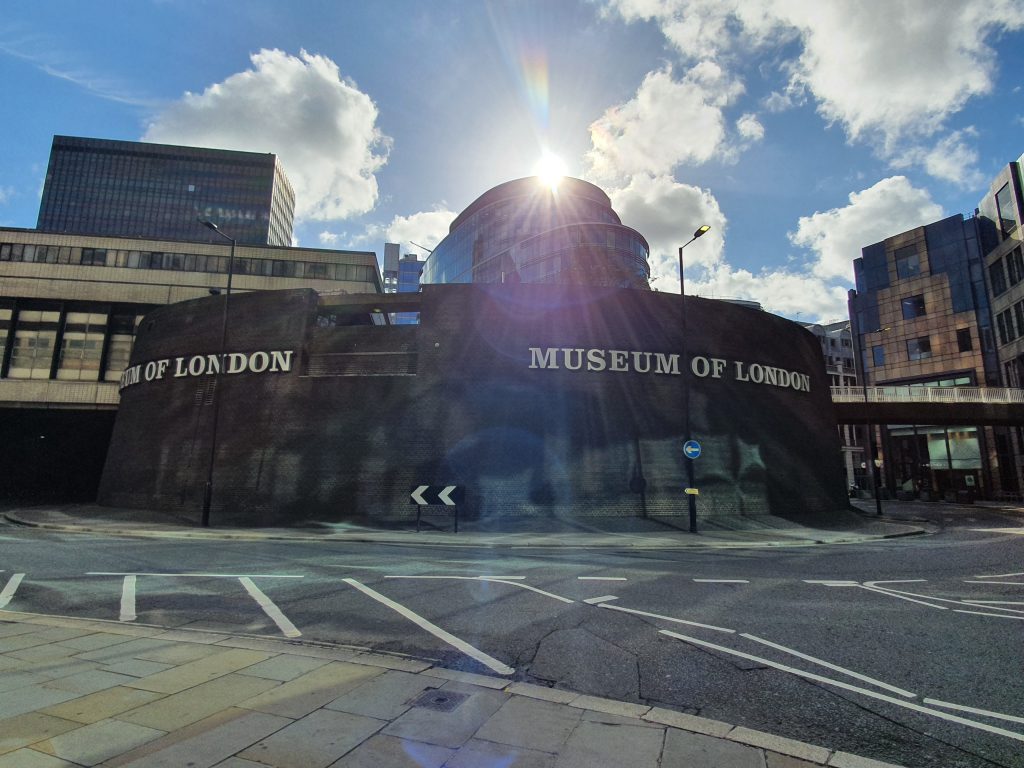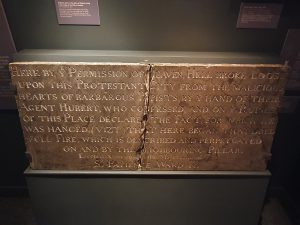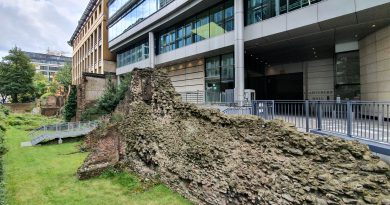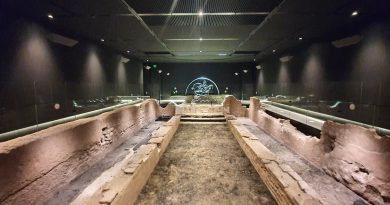London – City of London – Museum of London (1681 Pudding Lane Bakery Site Plaque)
This is another marvellous exhibit in the Museum of London, a plaque dating to 1681 which was placed outside the site where the Great Fire of London started on Pudding Lane. The museum notes that the plaque had to be removed in the early eighteenth century, as traffic jams were caused by people stopping to read it.
The plaque reads:
“Here by ye permission of heaven, hell broke loose upon this Protestant City from the malicious hearts of barbarous Papists, by ye hand of their agent Hubert, who confessed, and on ye ruins of this place declared the fact, for which he was hanged vizt. that here began that dreadful fire, which is described and perpetuated on and by the neighbouring pillar.”
This attempt to blame the Catholics, as someone always has to be blamed for disasters, was also replicated on the Monument which still stands today by the underground station of the same name. The text on the main monument was though scratched out in the early nineteenth century. Hubert refers to Robert Hubert who confessed to the fire, but no-one really believed him during the criminal trial. However, it suited the authorities to find him guilty and he was hanged at Tyburn on 27 October 1666.
The actual state of the plaque is a little more complex than the signage at the museum suggests, as the plaque was taken down on the orders of King James II, not unsurprising as he was a Catholic monarch (the last one in this country). King William III ordered it back up again, before its removal for the traffic reason mentioned by the museum, probably in around 1750 to 1755.
After the plaque was taken down for the final time, it was placed in the cellars of the building of 23 Pudding Lane, where it remained until the authorities demolished it to build Monument Street. It is remarkable that this has survived, but it’s a reminder of the days when people made false statements about those with other beliefs in a bid to create disharmony and hate. Perhaps those days haven’t quite yet gone away. Anyway, it’s rather lovely that no-one ever destroyed it and that it is today in the Museum of London.





